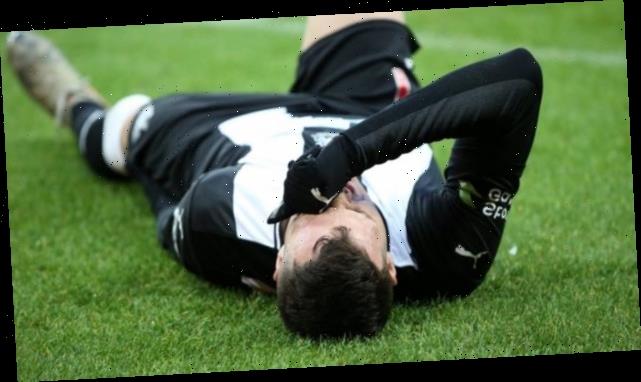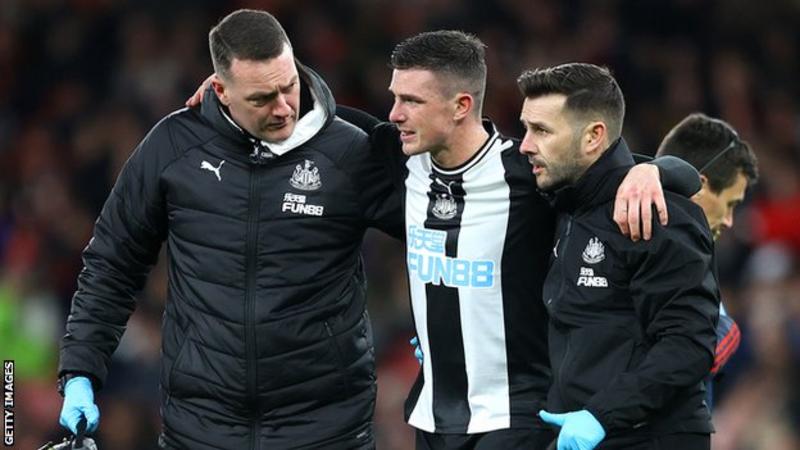Premier League clubs are preparing for “a lot more injuries” as players return to full training, says Newcastle club doctor Paul Catterson.
Players are back in full contact training with top-flight football set to return on 17 June.
“We are expecting more injuries at this time,” Catterson told BBC Radio 5 Live.
“The players have been running on treadmills and working indoors for eight weeks so that transition is a different stimulus for the body.”
He added: “There was an NFL lockout a few years ago and there was an increase in Achilles injuries so we are looking at that.
“We have had players asking if they can have ice baths after training and they can’t at the moment – all we can do is give them ice to take home. It’s like going back 15 years.”
- Premier League: What is still up for grabs this season?
- Coronavirus: How will contact tracing work in England?
‘Only as strong as our weakest link’
Catterson spoke at length about the measures in place at Newcastle – and all Premier League clubs – to prevent infection, ranging from the twice-weekly coronavirus tests to extensive cleaning and sanitising of equipment at the training ground.
He says the main priority was reassuring players that everything that can be done to make the environment safe is being done – but players have to remain vigilant.
“It is a weighty responsibility,” he said. “It’s a unique relationship with the players, it’s not a normal doctor-patient relationship. You see them at breakfast, at 2am when you’re waiting at airports, you get to know them.
“I am confident now that a Premier League training ground is one of the safest environments around.
“There is a big onus on the players, they have to conduct themselves professionally outside of this environment. We are only as strong as our weakest link.
“If anyone doesn’t follow the guidance they put the group at risk. So far we have had no positive results and we can only do that if we stop the players from being complacent.”
If any players test positive for coronavirus they face at least seven days in isolation, but Catterson says that training equipment will help them with any required contact tracing.
“We have to expect honesty from the players when it comes to who they have been with out of our environment,” he said.
“But once they are in training our GPS units will show whether they have been within two metres of a player, for how long and which players. We are using science.”
Source: Read Full Article

